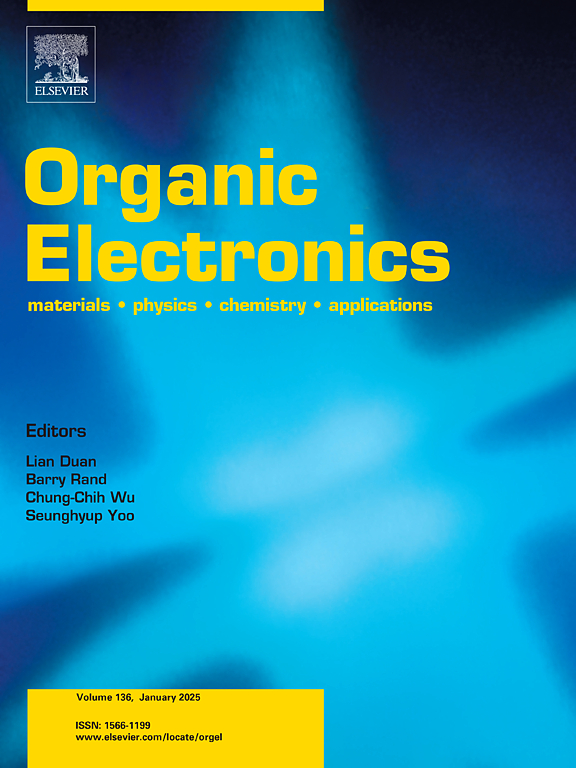高效有机太阳能电池中喹诺啉基电子受体的烷基硫代侧链工程
IF 2.6
4区 工程技术
Q3 MATERIALS SCIENCE, MULTIDISCIPLINARY
引用次数: 0
摘要
烷基硫代侧链工程在构建高性能有机太阳能电池小分子受体(SMAs)中起着重要的作用。本研究开发了两个乙基硫代喹啉核基sma (BQDS-F和BQDS-F),以阐明烷基硫代取代基对其物理化学和光电性质的影响。对比分析表明,与单烷基硫代BQDS-F相比,二烷基硫代BQDS-F具有更平坦的分子骨架、红移的吸收光谱、上移的分子轨道能级和更高的结晶度。然而,BQDS-F与聚合物给体D18的热力学相容性较差,导致相分离过度的异质结织构。相比之下,D18:BQS-F共混膜实现了更均匀的相分离,增强了激子解离效率,提高了载流子迁移率,抑制了电荷复合。结果表明,基于bqds - f的器件的效率为15.52%,远高于基于bqds - f的器件(12.21%)。研究结果阐明了乙基硫基取代基对喹诺啉核基sma的影响,对进一步推进有机光伏的发展具有指导意义。本文章由计算机程序翻译,如有差异,请以英文原文为准。

Alkylthio side-chain engineering on the quinoxaline-based electron acceptors for efficient organic solar cells
Alkylthio side-chain engineering plays an important role in constructing high-performance small-molecule acceptors (SMAs) for organic solar cells (OSCs). In this work, two ethylthio-substituted quinoxaline core-based SMAs (BQS-F and BQDS-F) are developed to elucidate the impact of alkylthio substituents on their physicochemical and photoelectric properties. Comparative analysis reveals that the dialkylthio-substituted BQDS-F exhibited a more planar molecular backbone, red-shifted absorption spectrum, upshifted molecular orbital energy levels, and enhanced crystallinity compared to the monoalkylthio-substituted BQS-F. However, the poor thermodynamic compatibility of BQDS-F with the polymer donor D18 leads to excessively phase-separated heterojunction textures. By contrast, more homogeneous and uniform phase separation is realized in D18:BQS-F blend film, resulting in enhanced exciton dissociation efficiency, improved charge carrier mobility, and suppressed charge recombination. As a result, the BQS-F-based device affords a much higher efficiency of 15.52 % compared to the BQDS-F-based device (12.21 %). The results clarify the effect of ethylthio substituents on quinoxaline core-based SMAs, which are instructive to further advance the development of organic photovoltaics.
求助全文
通过发布文献求助,成功后即可免费获取论文全文。
去求助
来源期刊

Organic Electronics
工程技术-材料科学:综合
CiteScore
6.60
自引率
6.20%
发文量
238
审稿时长
44 days
期刊介绍:
Organic Electronics is a journal whose primary interdisciplinary focus is on materials and phenomena related to organic devices such as light emitting diodes, thin film transistors, photovoltaic cells, sensors, memories, etc.
Papers suitable for publication in this journal cover such topics as photoconductive and electronic properties of organic materials, thin film structures and characterization in the context of organic devices, charge and exciton transport, organic electronic and optoelectronic devices.
 求助内容:
求助内容: 应助结果提醒方式:
应助结果提醒方式:


